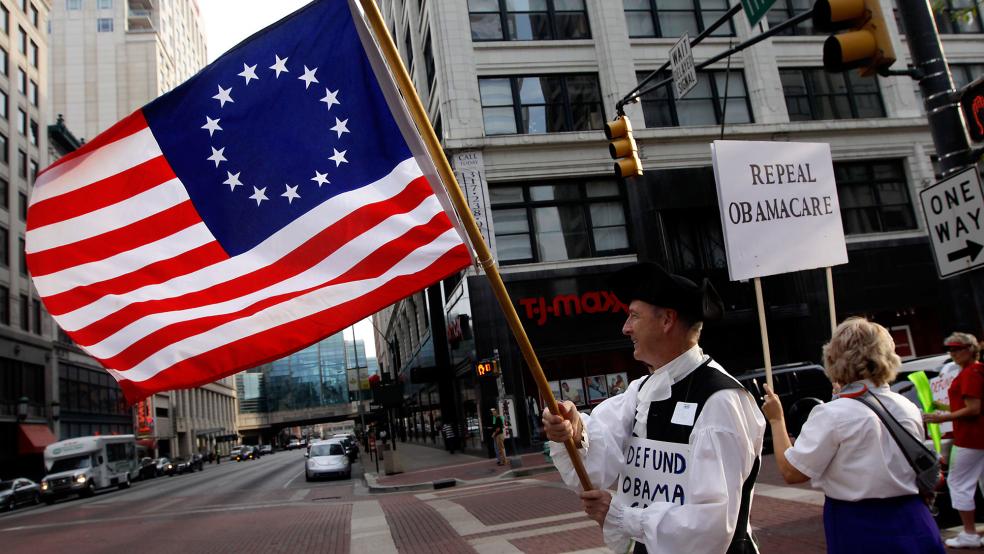Tax reform has been pretty much put off until after the 2016 presidential election, but bipartisan efforts continue to grow to cancel the pricey, 40 percent tax on most high-value, employer-provided health insurance plans that will take effect in 2018 under the Affordable Care Act.
Anti-tax Republicans, liberal Democrats and even major labor unions are banding together to try to prevent the so-called “Cadillac Tax” from taking effect. And in the latest move to build momentum, Republican Sen. Dean Heller of Nevada and Democratic Sen. Martin Heinrich of New Mexico on Thursday unveiled the “Middle Class Health Benefits Tax Repeal Act” to target the tax for extinction.
Related: Obamacare's Cadillac Tax Hits the College Campus
“Imposing a devastating tax on the 1.3 million Nevadans receiving employer-sponsored health insurance is a terrible idea,” Heller said in a statement. “Hardworking Nevadans employed in the restaurant and tourism industry, to public employees, to small business owners, and retirees will all face the effects of the ‘Cadillac Tax.’”
“Doing away with this onerous tax on employees’ health coverage before it goes into effect will protect important benefits for workers and ensure businesses and families get a fair deal,” Heinrich added.
While much of the controversy over Obamacare has focused on the government’s cost of providing subsidized health insurance plans to millions of previously uninsured Americans, opposition has been simmering for months over the administration’s plan for financing a substantial portion of the overall program with a stiff tax on higher-end policies provided by insurers and union organizations.
Beginning in 2018, health plans that cost over $10,200 for an individual or $27,500 for a family plan will be subject to the tax, according to an analysis by the Kaiser Family Foundation. The tax is 40 percent of the amount that exceeds those thresholds. Case in point: If a family plan costs $30,000, the employer offering the plan would have to pay 40 percent of the $2,500 above the threshold, or $1,000 for each family it covers under that plan.
Related: How Obamacare Will Impact Your Taxes
Although there are still two years before the tax begins to bit, many businesses already have begun making plans for the tax, according to Bloomberg, and are considering scaling back health benefits for their upper income employees while paying strict attention to Internal Revenue Service rules.
An estimated one third of employers would be subject to paying the new tax in 2018 unless they adjust their insurance plans.
Mallory Micetich, a spokesperson for the National Coalition of Benefits, warned today, “Absent repeal, the 40 percent tax will slow private sector health care innovation and erode the value of the employer-sponsored health care benefits upon which more than 150 million Americans currently rely.”
The tax was included in the Affordable Care act in part as a way to contain long-term health costs and reduce the benefit of a major federal tax provision that excuses employer-provided health insurance from income and payroll taxes, Bloomberg notes. But it also would be a huge revenue generator, raising an estimated $87 billion for the Treasury over the coming decade, according to the Congressional Budget Office.
Related: Sisyphus on the Potomac: The Senate Pushes Tax Reform Up a Long, Steep Hill
Joseph Antos, a health care expert with the American Enterprise Institute, said that repeal of the tax is “pretty much a bipartisan issue,” although Republicans and Democrats may have sharply differing views on how to offset the tens of billions of dollars of lost revenue. Moreover, Congress might consider something short of full abolition of the tax, such as indexing so that the Cadillac tax doesn’t hit everyone.
“If it weren’t a matter of money the tax would have been gone by now,” he said in an interview. “But it is a matter of money – quite a bit of money. And it’s going to be the age old problem of how are they going to pay for it?”





